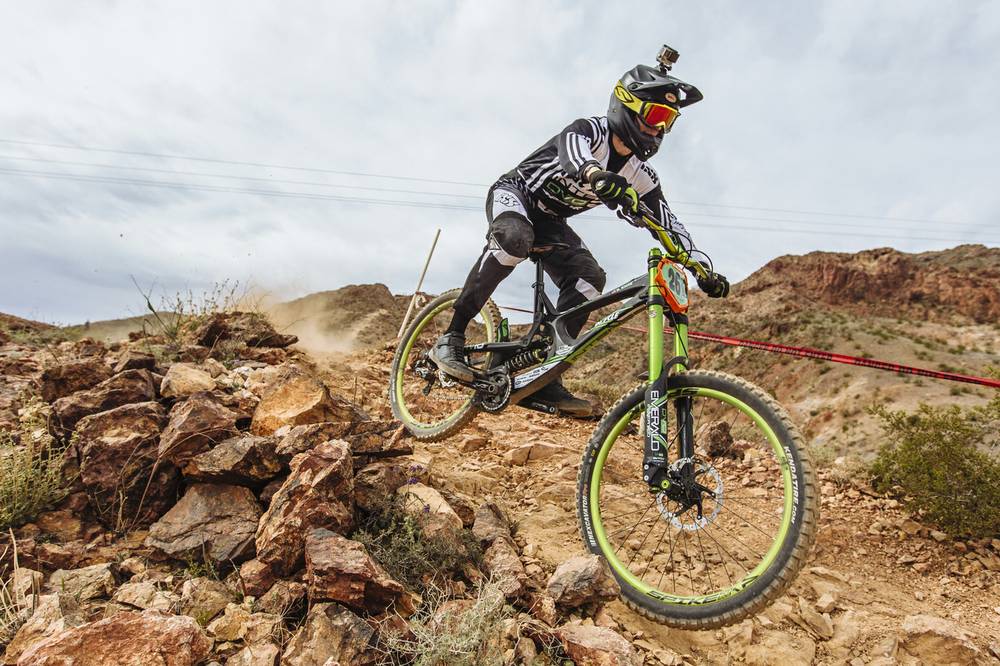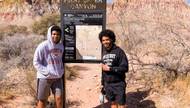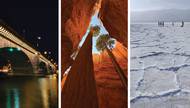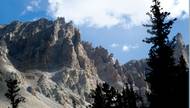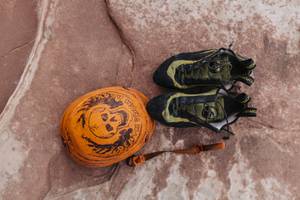It’s like Mars, if Mars had Strip views and was littered with lava rocks, and every so often welcomed a throng of mountain bikers eager to fling themselves from its steep cliffs for sport or bragging rights or both.
This is Bootleg Canyon, known for its scenic hikes, crazy ziplines and, most notably, its revered mountain-bike trails, which zigzag the craggy mountainscape like a cat’s cradle, flanked by vistas of sweeping desert and a dwarfed Las Vegas Boulevard.
This March day is Reaper Madness, the final event in the DVO Winter Gravity racing series and a qualifier for USA Cycling nationals. It features downhill, Super D, dual slalom and chainless, which, as the name implies, involves screeching down the mountain without pedaling. Ideally, the same goes for all categories—the less pedaling, the better. Campers and trucks loaded with bikes form a makeshift campground at the edge of the park, where riders kick back between practice runs and listen for announcements over blaring reggae and pop-punk.
It’s challenging, it’s gnarly and it’s great in winter, event organizer “Downhill” Mike Scheur says of the terrain. “When people ski they use the word ‘rhythmic.’ The same goes for Bootleg. It’s flowy; it’s beautiful.”
The otherworldly trails attract a surprising mix of riders, ages 7 to 50-plus, male and female, pro and amateur. Among the pros is Quinton Spaulding of Henderson on the KHS Factory Racing Team with Logan Binggeli of St. George, Utah, and Kevin Aiello of Rancho Santa Margarita, California. They’re a dominant team, with a world championship and multiple national titles under Spaulding’s management.
“It’s really rough terrain,” says Spaulding, who takes home first place in the men’s open downhill category, for flying down the mountain in 4 minutes and 3 seconds—20 seconds faster than his closest competitor. “It’s as rough as anything you’ll ride anywhere in the world—that’s for sure. It’s very exposed.”
Spaulding, who’s managed races for 16 seasons now, has been riding for 20. To stay at the top of his game, he follows a strict training program of 150 miles per week on his road bike, time in the gym, swimming and cross-training on motorcycles. He hasn’t eaten junk food for more than five years. No burgers, chips or soda, but—he says with a smirk—he drinks a lot of beer. “Our sport is very explosive. We’re racing full-out for four minutes on average,” he says. “If you’re not fit, you can’t compete. If you lose oxygen to your brain, you can’t think quickly.”
The Outdoor Issue
Also competing as a pro is 16-year-old Samantha Kingshill of Sacramento, California. She owns the top spot in Super D, dual slalom and chainless, in the latter besting her closest competitor by almost a minute and a half. In downhill, she finishes just 6 seconds behind the winner. Kingshill wants to be No. 1 in the world, and she’s making quite a statement in what has become an important proving ground.
Bootleg also hosts enduro races, Interbike rides and trail runs. The trails were developed by the Civilian Conservations Corps in the 1930s, but fell into disrepair until the 1990s, when late artist and mountain biker Brent Thomson carved out new ones.
“It’s world-renowned,” says Ashlie Watters, secretary of the Southern Nevada Mountain Bike Association, adding that the ride is distinct in Southern Nevada. “The trails are different because they’re far more technical, and the rocks are more jagged. There’s a saying: You donate blood to Bootleg.” And riders agree: It’s worth it.
